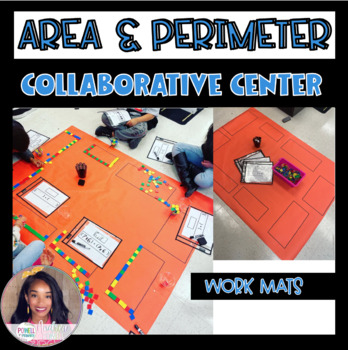Area and Perimeter Collaborative Center Workmats- Distributive Property
- PDF
What educators are saying
Description
Get students out of their seats and working together using these area and perimeter work mats and recording sheets. Students can work on using area models to represent the distributive property, finding the perimeter of rectangles, and finding the area of rectangles.
Activity Prep: Measure and draw 8 rectangles on butcher paper. Label rectangles A-H. Provide students with square tiles or measuring tools.
What's Included
- Area- Distributive Property work mat
- Perimeter Practice recording sheet
- Area Practice recording sheet
- Perimeter and Area recording sheet
Questions? Send me an email.
See the activity in action here- Area- Distributive Property center.
Don’t forget to leave feedback on your purchase. Each time you leave feedback on a product, TPT will give you credits to use towards future purchases.
Don’t miss anything! Look for the green star next to my store logo and click it to become a follower.




